Check out what is new in Poultry Industry
Find the best technical articles, forums, and videos on Poultry Industry at Engormix. Enter now and interact with the world's largest agricultural social network.
.jpg&w=3840&q=75)
Brian Jordan (University of Georgia) explains how False Layer Syndrome affects poultry and what can be done to prevent it, in this Engormix interview during IPPE 2024 in Atlanta, USA....
Comments : 1
Recommendations: 1
.jpg&w=3840&q=75)
Mike Czarick (University of Georgia) explains how important it is to have the right combination of static pressure and inlet opening, as well as considering outside temperature, in this Engormix interview during IPPE 2024 in Atlanta, USA....
Comments : 0
Recommendations: 1
.jpg&w=3840&q=75)
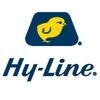
Srinivasa Farms and Hy-Line: Pioneering Growth in India’s Poultry Market
Suggested link
.jpg&w=3840&q=75)
Mike Czarick (University of Georgia) shares insights and test results on the benefits of uniform floor heating, in this Engormix interview during IPPE 2024 in Atlanta, USA....
Comments : 0
Recommendations: 1
John Boney (Pennsylvania State University) New generations of feed enzymes are included to enhance nutrient utilization. This study was designed to evaluate the efficacy of a new generation phytase, HiPhorius (HP), and protease, ProAct 360, when fed to peaking hens. Dietary treatments included Positive Control (PC), Negative Control 1 (NC1) at 0.15% nPP, NC1+600 FYT/kg HP, NC1+900 FYT/kg HP, Negative Control 2 (NC2) with a 2% crude protein (CP)...
Comments : 0
Recommendations: 0


Developing effective natural solutions for animals - Liptosa: 2020 Summary and 2021 Challenges
Suggested link
.jpg&w=3840&q=75)
Yosef Huberman (CONICET-INTA) talks about pathogenicity in E. coli strains and how the approach in analysis has changed to genotyping and sequencing, in this Engormix interview during IPPE 2024 in Atlanta, USA....
Comments : 0
Recommendations: 1
Mike Persia (Virginia Tech) Experiments were conducted to determine the bioavailability of fine ground aragonite (FGA) using 0-14 d old broilers and to determine the use of FGA on performance, eggshell quality, and tibia ash (TA) of laying hens from 28-56 wks. In experiment 1, 450 as hatched Ross 708 broilers were fed a basal diet without either LS or FGA containing 0.35% Ca and LS and FGA additions resulting in 0.43, 0.51, 0.59, and 0.67% Ca. Body...
Comments : 0
Recommendations: 0


Current market review and perspective of Florfenicol, Tilmicocin, vitamins and aminoacids
Suggested link
.jpg&w=3840&q=75)
Erik Visser (Hamlet Protein) offers his insights on market development and sustainability in this Engormix interview during IPPE 2024 in Atlanta, USA....
Comments : 0
Recommendations: 0
.jpg&w=3840&q=75)
Nelson Ruiz (Nelson Ruiz Nutrition LLC) explains how to deal with both cases and offers his insights and recommendations, in this Engormix interview during IPPE 2024 in Atlanta, USA....
Comments : 0
Recommendations: 0


Bacillus licheniformis-Fermented Products Improve Growth Performance and Intestinal Gut Morphology in Broilers under Clostridium perfringens Challenges (Extract)
Suggested link
Nelson Ruiz (Nelson Ruiz Nutrition LLC) A set of 24 solvent extracted commercial soybean meal (CSBM) samples, which corresponded to the same lots of CSBM used in the field, were evaluated. The CSBM were from different origins (Argentina, Bolivia, Paraguay, Trinidad & Tobago, U.S.). The objective herein was to evaluate the relationship between KOH protein solubility (KOHPS, a measurement of overprocessing) and trypsin inhibitor activity (TIA, a...
Comments : 8
Recommendations: 5
.jpg&w=3840&q=75)
Vivek Kuttappan (Cargill) speaks on the use of technologies such as artificial intelligence and machine learning to measure gut microbiome maturation and improve gut health, in this interview during IPPE 2024 in Atlanta, USA....
Comments : 0
Recommendations: 2
Megan Koppen (Cargill) Yucca schidgera (steroidal) and Quillaja saponaria (triterpenoid) are two saponins available for commercial feed use in the poultry industry. Though their targeted effects tend to overlap, notable differences in their chemical make-up, structural complexity and mechanistic action exist. While saponins are known to reduce ammonia emissions in livestock, direct saponin source comparisons are scarcely found in literature. The...
Comments : 0
Recommendations: 0
Megan Koppen (Cargill) Challenges and demand in the poultry industry paired with volatile feed ingredient costs and varying meat prices continue to persist. Thus, focusing on value-add feed additive selection is vital, especially with birds reared longer. Phytogenic feed additives have shown to improve nutrient digestion and utilization as well as meat quality properties. Based on several digestibility studies, Delacon developed nutritional matrix...
Comments : 0
Recommendations: 2
.jpg&w=3840&q=75)
Lieske van Eck (Cargill) talks about a tool developed to measure body fat level in laying hens and how it helps in the decision-making process to get better egg persistency and better egg production, in this interview during IPPE 2024 in Atlanta, USA....
Comments : 0
Recommendations: 0
Evan Chaney (Cargill) Avian pathogenic Escherichia coli (APEC) cause colibacillosis in poultry operations resulting in significant flock health and economic burden, creating the need for additional solutions to promote resiliency against infection. This study evaluated a postbiotic feed additive containing a saponin ingredient (SCFP+; Dia-V™ PT PLUS prototype, Diamond V, Cedar Rapids, IA), alone or in combination with...
Comments : 0
Recommendations: 1
.jpg&w=3840&q=75)
Tom Tabler (University of Tennessee) explains how sprinklers work and their impact on feed conversion, weight gain, and bird performance, in this Engormix interview during IPPE 2024 in Atlanta, USA....
Comments : 0
Recommendations: 2
.jpg&w=3840&q=75)
Martha Pulido-Landínez (Mississippi State University) comments on two Enterococcus studies presented at the IPSF, and offers practical recommendations regarding this issue, in this Engormix interview during IPPE 2024 in Atlanta, USA....
Comments : 1
Recommendations: 1
.jpg&w=3840&q=75)
Fausto Solís (The Wenger Group) speaks on a replacement of calcium carbonate in layer diets, as well as the importance of magnesium levels, during this interview at IPPE in Atlanta, USA....
Comments : 0
Recommendations: 0
.jpg&w=3840&q=75)
Gwen Venable (IPPE Executive Vice President - Expo & Communication Services) talks about the success of the IPPE 2024 in Atlanta, and shares the dates for next year's edition: Jan. 28-30, 2025....
Comments : 0
Recommendations: 0
.jpg&w=3840&q=75)

Srinivasa Farms and Hy-Line: Pioneering Growth in India’s Poultry Market
Suggested link
.jpg&w=3840&q=75)
Mike Gauss (Kent Nutrition Group) offers insights into achieving ESG goals while staying true to your company's core values, in this interview during IPPE 2024 in Atlanta, USA....
Comments : 0
Recommendations: 0
Héctor Leyva-Jiménez (United Animal Health) Broiler chickens from commercial rearing facilities are subjected to a variety of stressors that increase disease susceptibility and reduce growth. Direct-fed microbials (DFM) can be employed to introduce beneficial bacteria to the digestive tract of poultry and through diverse mechanisms boost performance. The present study was conducted to evaluate the effect of supplementing broiler diets...
Comments : 0
Recommendations: 0


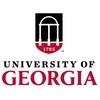


.jpg&w=3840&q=75)

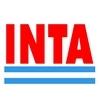


.jpg&w=3840&q=75)


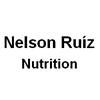



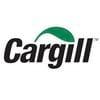
.jpg&w=3840&q=75)


.jpg&w=3840&q=75)
.jpg&w=3840&q=75)



.jpg&w=3840&q=75)













.jpg&w=3840&q=75)






